Kids Web Japan
Web Japan > Kids Web Japan > Travel > Exploring Kyoto on Two Wheels > Heian Jingu to Kyoto Gyoen Park
Travel
Exploring Kyoto on Two Wheels
From Heian Jingu Shrine to Kyoto Gyoen Park
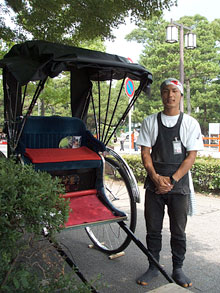
A ride in a rickshaw would be nice, but as we're on bikes, we'll pass this time!
Heian Jingu Shrine
Turn right where the Shirakawa River crosses Sanjo Street, then turn left at the next crossroads. After going across the pedestrian crossing you'll be able to see the red torii gateway of the Heian Jingu Shrine. As you get nearer the torii, you gradually realize just how tall it is! The big museum at the side of Jingu-michi, the wide avenue leading up to the shrine, gives the area a serene air. Ride on a little after going through the torii and you're at the Heian Jingu Shrine. After parking your bike, you can go in and explore the shrine grounds, which include a beautiful Japanese garden.
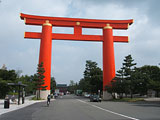
What a big gate!
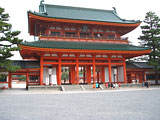
From here you walk into the grounds of the Heian Jingu Shrine.
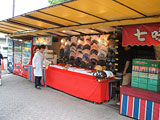
An outdoor stall selling fans
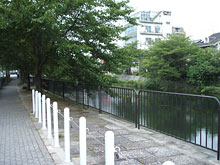
Riding along the Lake Biwa Canal
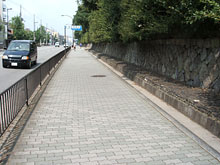
The road in front of the palace - where's the gate?
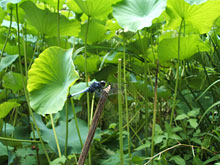
In summer you can see lots of dragonflies at the pond.
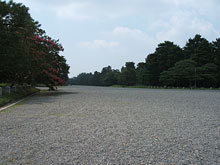
Cycling along the broad gravel path of the park.
Lake Biwa Canal
Leaving Heian Jingu, you will soon come within sight of the Lake Biwa Canal. This canal was built to carry water from Lake Biwa to Kyoto. The water is used for drinking and for generating electricity. Where the canal meets Higashi-oji Street, turn right into this avenue and go north. At the next crossroads turn left into Maruta-machi Street. Ride along the sidewalk on the right-hand side of the road.
Kyoto Gosho and Kyoto Gyoen
Just past the second crossroads after the Kamogawa River, you will see the gates of the Kyoto Gyoen (Kyoto Imperial Park) - as you ride along you should see three gates one after another. You can go in through any of them. The park is spacious, and because you can go right through and leave at the other end, you often see people riding bicycles inside. It's not easy to cycle on the gravel path, but riding in the tracks of other cyclists makes it a little easier. Inside the park is the Kyoto Gosho (Imperial Palace), which housed Japanese emperors for 500 years until the beginning of the Meiji Era (1868-1912). The palace is open for public viewing in the spring and autumn; at other times, you need to apply in advance.
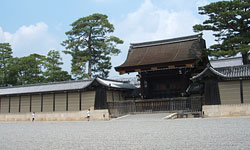
The main gateway to the Kyoto Gosho palace. It opens only on special occasions.